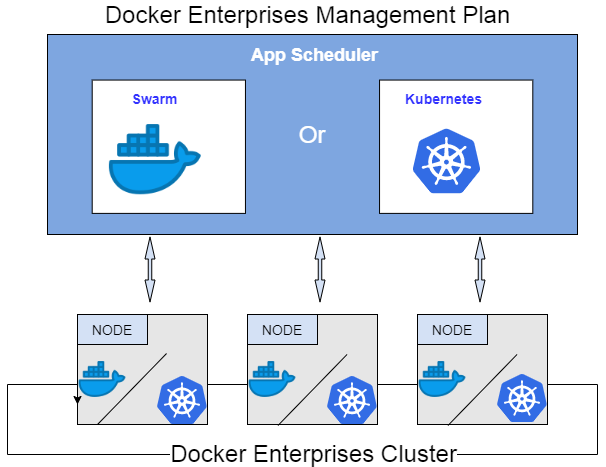
- #WHAT IS THE DIFFERENCE BETWEEN DOCKER AND KUBERNETES INSTALL#
- #WHAT IS THE DIFFERENCE BETWEEN DOCKER AND KUBERNETES MANUAL#
So in addition to running Docker containers, it is also possible to run CRI-O and Containerd runtime-compatible containers on Kubernetes.ĭocker Swarm: Docker Swarm was built to run Docker containers and “Docker Ecosystem” tools. As a result, Kubernetes’ YAML, API, and client definitions differ from those used by Docker. Kubernetes: Early in its development Kubernetes’ goal was to support a wide range of container types in addition to Docker.
#WHAT IS THE DIFFERENCE BETWEEN DOCKER AND KUBERNETES INSTALL#
Docker Compose can be used to install multi-container applications once those applications are defined with a YAML configuration file. Deployments and services provide abstractions that help to manage multiple Pod instances.ĭocker Swarm: Multiples (replicas) of single container applications are deployed and managed as “swarms” in Docker Swarm. Multi-container applications can be deployed together in a pod. A pod minimally includes the application and a network service container. Kubernetes: Applications are deployed as multi-container “Pods” in Kubernetes. New nodes can join with worker or manager roles, which provides flexibility in node management. Creating a cluster just requires you to deploy a node (server) and tell it to join the cluster. It is worth noting that most major cloud providers have hosted Kubernetes versions that remove much of the friction that building your own system involves.ĭocker Swarm: Installing Docker Swarm is about as easy as installing any typical application with a package manager. Information about infrastructure is also needed ahead of time and includes assigning roles, number of nodes, and node IP addresses. Kubernetes: Installing Kubernetes requires some decisions about, for example, which networking solution to implement, and configuration, at least initially, must be manually defined. Below, we’ll look at some of the notable differences and consider the pros and cons of the differing approaches. Though both of the COEs are open-source, run Docker containers, and provide similar functionality there are a number of significant differences in how these tools operate. It is highly scalable, extremely simple to deploy, provides container management features such as load balancing and autoscaling. If you are all-in on using Docker for your system, Docker assures backward compatibility with other Docker tools. For example, Docker Swarm uses the same command-line interface (CLI) as is used for Docker containers. One benefit for users of Docker containers, is the smooth integration this provides. Docker, the company that created the Docker container, also built Docker Swarm as the Docker-native orchestration solution. What is Docker Swarm?ĭocker Swarm or just Swarm is also an open-source COE.


Kubernetes has a lot of container management “intelligence” built-in that ranges from being able to place containers on the appropriate nodes based on resource requirements, load balancing across applications, scaling applications up and down in response to load, restarting or replacing stalled and failed containers, and more. It is possible to even have a Kubernetes cluster that spans across different infrastructure, such as a hybrid cloud with public and private resources. It can be deployed on almost any kind of infrastructure - anything from your laptop, a local data center, out to the scale of a public cloud. Kubernetes (also referred to as K8s) is a COE that was initially developed by Google based on systems they use to run containers at web-scale and then open-sourced. These are container management automation tools that handle the complexity of web-scale applications with ease.
#WHAT IS THE DIFFERENCE BETWEEN DOCKER AND KUBERNETES MANUAL#
The speed, responsiveness, and flexibility of these systems also bring added complexity that is inefficient if managed by traditional manual IT processes.Įnter the Container Orchestration Engines(COE) like Kubernetes and Docker Swarm. The intentional independence of those API-coupled smaller services means each can be updated, scaled up or down, and even entirely replaced as needed. Containers have also been a boon to microservices based applications, where the overall application service may comprise two, three, or more smaller applications. Containerization, along with DevOps processes, has accelerated the ability to build, deploy, and scale applications on cloud systems.


 0 kommentar(er)
0 kommentar(er)
